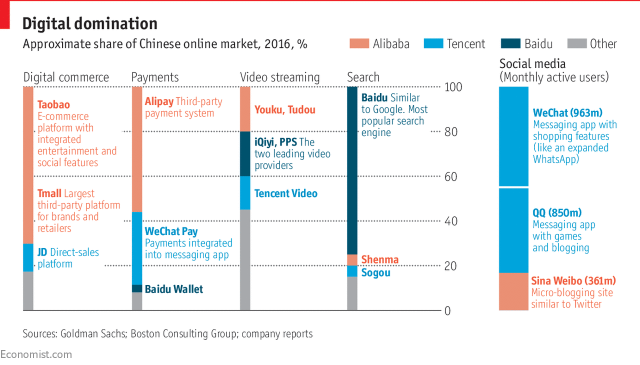Online Sales in China exceeded USD 366B in 2016, almost comparable to e-commerce sales in the United States (360B in 2016). Note that online retail is “only” about 8.5% of the overall retail market in the United States. According to Fortune Magazine, Amazon was 34% of the US e-commerce market. However, China is an entirely different story. Amazon barely makes an appearance among the big e-commerce contenders. Taobao – an e-Bay like electronic market place owned by Alibaba commands a lion’s share of the China e-commerce market. Perhaps, even more, impressive is the scale of vertical integration of mobile payment systems with their corresponding e-commerce websites. For instance, the largest third-party payment system, Alipay, the mobile payment arm of Alibaba, has…
Leave a CommentCategory: Operations
I always thought that the term Black Friday, originated when retail firms turned “red” to “black”. Due to the heavy seasonality in sales, the existence of this term always made sense, especially for Retail firms. Through Kevin Drum at Mother Jones, I learned that history is more complicated. But, most interesting for the readers of this blog: The term originated in Philadelphia, probably sometime in the 50s, and wasn’t in common use in the rest of the country until decades later. From Wanamaker’s Department Stores to trying to Amazon HQ2 to Philly, Retail has changed a lot here.
Leave a CommentJapanese automakers are heading towards 40% of the US market share based on reporting by WSJ and Nikkei Asia Review. Given the information, it seems reasonable to ask why US automakers do not do so well in the Japanese market. Alana Semuels, who does excellent reporting on business and society in the Atlantic Magazine, asks precisely that question: Why Aren’t U.S. Cars Popular in Japan? It is not due to tariffs. She finds that one possible reason is the high Quality of Service at Japanese dealerships which focus on Customer Lifetime Value (CLV) (providing services such as free servicing, pick up and return services, and individual attention, etc.) and the low investment of US Auto companies in dealership service networks in…
Leave a CommentBloomberg has an excellent article on Retail Apocalypse, filled with some neat data visualizations, which I highly recommend. (Read the whole thing!) While media and political discussions have generally focused on the outsourcing of manufacturing jobs (e.g. Carrier, Rexnord, etc.) and the death of certain industries (coal, mining – which actually hire relatively fewer people than retail), I have always thought that there has been relatively little attention on Retail Jobs that have been lost in the past few years. For sure, Retail has been undergoing an accelerated sea-change due to the growth of e-commerce, historic suburban over-storing decisions, and the influence of changing customer tastes. However, at the heart of this crisis, is the loss of retail jobs and…
Leave a CommentIn analyzing Snap Spectacles, I discussed the value of early information, and argued how collecting early information is helpful. Production lead times for hardware products are long, and hence firms have to make huge commitments based on forecasts even before the demand starts trickling even as the product is being manufactured. Ideally, a firm would like its total production volume to match the final demand exactly. Being able to revise this production commitment can be a significant advantage. Even a small amount of initial demand can help correct orders or validate decisions with high confidence. Some recent data about VA 2017 elections from NY Times is useful in thinking about this problem in a different context. Below is a…
Leave a CommentThrough the Seattle Times, here is a clip on the history of Amazon Prime. Below, I discuss two points on scaling Prime services. Two Points on Scaling: Scaling Volume: Prime was clearly a way to scale revenues through the volume of transactions, even at a huge setup cost, by introducing a subscription plan. An issue with scaling revenues this way is the stickiness of prices. It took a whole nine years for Amazon to go from $79 to a more profitable fee of $99. (I thought they would be raised to $108 at $9 a month – closer to NetFlix rates – but the fees were stickier than I had thought). Scaling Speed: It is much harder to scale on…
Leave a CommentHere is the previous post on Amazon Key, which begins services on Nov 8 in about 37 cities. Many are skeptical about the usefulness or the need for the service. For instance, here is “I’m not ready for Amazon Key” on CNBC, and a dramatic narration (“I’d rather have porch pirates steal my sponges than let Amazon in my house“) of the trust-in-service path point that I made in my previous post on Amazon Key. Here is a Statista chart capturing the results of a poll: “How comfortable do you feel about guest access via smart locks?” (source: in the chart). Here is another chart through Morning Consult that gives some additional information on reception to the idea based on…
Leave a Comment